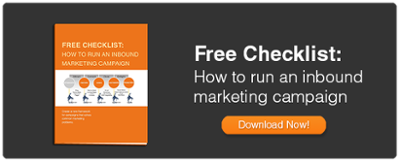Every year, the inbound environment gets more complicated, with new technologies adding greater complexity to the mix – and making your planning even more challenging. As you put the finishing touches on your inbound marketing strategy for 2019, here are 5 options to consider before finalizing your plan:
1. Does your website feature smart content?Smart content is content that’s tailored expressly to the interests of your website visitors. For example, you can tailor the content to where a prospect is in the sales cycle, by showing specific content to them on their first visit to your website, and then showing different content on a second or third visit. Or you can show specific content to visitors from a certain geographic location, zero in on a visitor’s unique interests, or greet first-time visitors with a welcome message and a special offer. Marketing automation systems use smart rules to generate this specific content, which ensures that you’re not boring your prospects by showing them the same old website and content, every time they stop by.
Inbound marketing is all about content. The whole idea is to draw prospects to you, with information that they perceive as valuable. So if you’re still dumping your sell sheets on your web site and considering that your content work is done, you may need to re-think your approach. Prospects do want the technical specs on your products and solutions, but before they get to that point they want a whole lot more. They want to know exactly how you can help them address their problem or concern (with white papers and business cases), they want to learn about your thought leadership (in blogs and social media posts), and they want to know how others view you (in customer success stories and testimonials). This represents a lot of original content, but your prospects want and expect it.
One of the big benefits of digital is that it makes it easy to track prospects’ activity and the performance of your campaigns. Make sure you dig into all of the analytical tools at your fingertips, including Google Analytics and all the reports generated by your marketing automation system.
And for real-time insight into the impact of your digital marketing, consider SONAR, Living Stone’s digital marketing analytics tool and reporting service. SONAR aggregates all analytics from social media channels, Google Analytics-driven online pubs, e-news engines, and APPs into a single score, to provide you with precise information on the global impact of your digital marketing activities.
In addition to providing a global view of what’s taken place in your digital ecosystem during a given period, SONAR identifies important trends (what happened on which channel, for example), and presents precise information about cause and effect, analyzing specific data from diverse channels separately.
Re-targeting “follows” your website visitors and shows them your ad. There are two ways to track your prospects. Pixel-based re-targeting uses cookies (ex. Facebook Pixel), which are a tiny bit of JavaScript (a pixel), to tag anonymous website visitors. When they visit other sites, that cookie, which has been placed on their browser, tells re-targeting platforms to show them a particular ad. This happens immediately, so one benefit is a quick reinforcement of whatever is was they looked at first on your website. Another way to re-target is list-based re-targeting, where you supply a list of emails to a social media platform, which links those emails with profiles of its members and shows them a particular ad (ex. Facebook Custom Audiences). You can use re-targeting at any stage in the sales process, from building awareness to generating qualified leads.
Right now, video is the superstar of online marketing, and live video is even hotter. Researchers at Facebook found that people are 300% more likely to watch a live video than one that was pre-recorded. And according to live video company Livestream, more people would rather watch live video than read a blog (80%), and 82% of people prefer live video to social posts. For B2B marketing, consider using live video for interviews, product demos, ‘behind the scenes’ videos of how products are made or tested, and event coverage. And consider adding cinemagraphs to your web pages. These are still photos with an element that moves, or panning or zooming on a still photo. These offer a great way to give life to B2B web pages.




